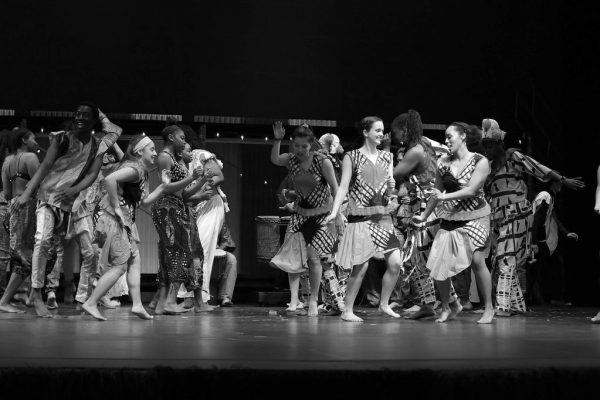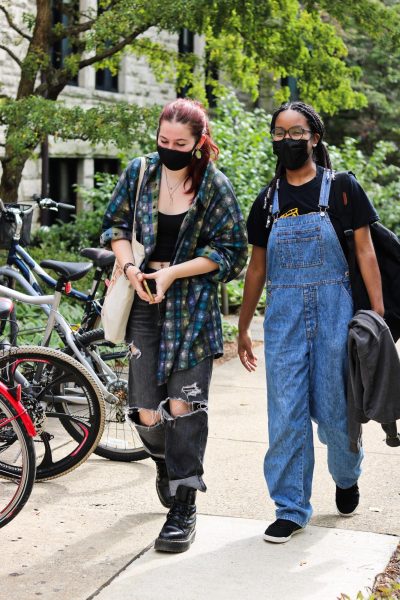Oberlin Should Offer Broader Range of Regional Food
One of the things I’m missing most about home, besides my family and friends, is my mother’s food. My mother’s food has always been important to me for a number of reasons. For one, she’s the most exceptional cook I know. She used to tell me that although her dishes were cooked with many ingredients, the most important one was love.
My mother is Indian, and though we live in the United States, my mother has been feeding me Indian food since before I can remember. Now, as an 18-year-old, my mother’s food means more to me than just flavor. It represents an interaction between mixed-American me and my rich and beautiful culture back in India. It represents generations of knowledge about food and cuisine, passed down from my great-grandmother, to my grandmother, to my mother, to me.
I often feel incredibly detached from my culture, and for me and many others, our food is one of the only ways we interact with our culture that we are so far removed from geographically. So, upon moving to Oberlin from Seattle, I knew living without that piece of my culture would be difficult.
Despite this, Oberlin does a fine job of providing ethnic food options. Umami, for instance, serves Japanese-inspired food with a blend of other Asian cuisines. The Rathskeller serves Mediterranean and Mexican-American cuisine for its Monday and Tuesday Fourth Meal options. Stevenson Dining Hall occasionally offers ethnic cuisine — granted, amidst a sea of traditionally white American food. AVI Foodsystems recently catered Indian food for the South Asian Student Association’s Diwali celebration, which was relatively good considering the limited scope of westernized Indian food.
And though these options are solid and provide a sort of break from more — no offense — bland white foods, I still feel a piece of my culture is missing. I recognize, however, that demanding my own personal culture be reflected in Oberlin’s dining options is an unrealistic and somewhat absurd request on my part. I’m not asking for my own culture to be accurately reflected in the food. I just want more variation, more change.
There are several limitations in my theoretical quest to expand Oberlin’s dining options. For instance, many ethnic, non-American cuisines require expensive and often obscure ingredients that don’t seem feasible for Oberlin to obtain. In addition, staff members may not have sufficient experience to cook or prepare ethnic foods.
One final obstacle, and potentially the most prominent, is that AVI gets priority on catering contracts for Oberlin-affiliated events. This means, for example, that rather than cater from a local or Cleveland-based Indian restaurant, SASA’s catering for its event was taken up by AVI. While more authentic and traditional Indian food may have been available for SASA, AVI catered and received payment for the event instead of, for example, a local Indian restaurant. Here arises another core issue — the removal of agency from student and faculty-led events in decision making for their groups.
Despite these obstacles, I think Oberlin could make some changes to further increase the diversity of its dining options. For instance, the aforementioned Fourth Meal provided by the Rathskeller could be turned into day-long meal options. This would make ethnic food available at this location for entire days, rather than just three-hour periods, and would be convenient for AVI because they wouldn’t have to switch from daytime offerings to Fourth Meal. Allowing individual student and faculty-led organizations to choose catering options rather than giving AVI the right of first refusal would mean food at events would be more specific to the group’s vision for their event, and more authentic to the culture being represented.
Additionally, many cuisines contain food based on rice. Umami serves almost exclusively rice-based food. This provides the opportunity to serve more ethnic cuisines — for instance, making a simple dal (a spiced Indian soup made from steamed lentils), fried rice (prominent in Thai, Vietnamese, and Chinese cuisine), or Mexican rice with tomatoes and spices. Though this wouldn’t be a fully authentic representation of these ethnic cuisines, it would help to improve diversity in the food being offered.
It should be mentioned that, although it shut down two years ago, Oberlin used to offer Mediterranean food at Elia, a dining option that existed where Umami currently stands. When co-ops reopened after pandemic restrictions had been lifted, a few dining options were removed. I do believe that, if reopened, previously closed dining options would receive a tremendous amount of traffic, considering how tired some students are of the current dining options.
It’s safe to say that after a couple of months of eating the same food each day, students will start to demand more options. We are a unique school in that we are located in an incredibly small town. Non-Oberlin-affiliated dining options exist but are pricey, few in number, and often difficult to access without a car, which many students do not have. Students in other schools, especially those located in large urban areas, have many cheap, local, non-school-affiliated dining options that offer a wider and more diverse variety of cuisine. I don’t think it’s too much to ask that Oberlin offer more variety, with a rotation of options throughout the school year.
Oberlin values diversity and inclusion, so much so that it is one of the school’s main tenets. This value has been integrated into our course offerings; our events; our student and staff body; and our clubs, groups, and organizations. I think Oberlin could do a better job of incorporating this value into the dining options, too.
I recognize that this request is a major one and would require a lot of work on the part of Oberlin and AVI. It would also require a change in the way AVI operates on campus. With that being said, ethnic food is important to students who come from diverse ethnic backgrounds. For students like myself, our food is a way for us to connect to our cultures that we are so separated from in rural Ohio.




